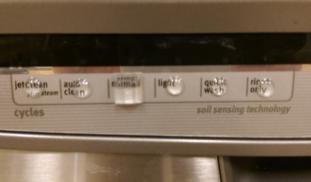Please wait...
About This Project
Tangible Surface Research, LLC
Many new ovens, dishwashers and other home appliances have flat, touch sensitive control panels instead of tactile buttons and knobs. Though these smooth interfaces are sleek and easy to clean, it is difficult for people with visual impairments to identify the appliance controls. Our goal is to develop and evaluate low-cost home appliance tactile cues for people with low vision.

Browse Other Projects on Experiment
Related Projects
VR for Virtually Everybody: Help us teach humanists and artists how to make virtual reality experiences
ViRVE is a proof-of-concept endeavor to model a modular, cheap, accessible VR creation lab that anyone can...
Designing touch surfaces to help the visually impaired operate home appliances
Many new ovens, dishwashers and other home appliances have flat, touch sensitive control panels instead...
Drawing Archaeology in Byzantine Athens
Gods and goddesses, gleaming temples, epic battles, heroes of legend – we’re all familiar with ancient Greece...


